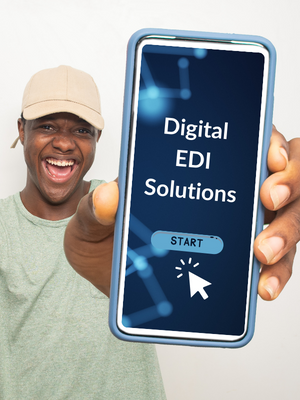I was talking to one of our clients recently when the Head of D&I said, “The trouble is, some of our executive leaders don’t really see a problem with diversity. They think that we have a great, inclusive culture and that the lack of diversity is a result of us working in a white, male-dominated sector. How do we make them feel the need to be more inclusive?”
Does that sound familiar? It might do, as it isn’t an isolated occurrence. In my experience, many of the existing leaders – particularly in sectors that are dominated by white men, such as finance, construction and tech – still grapple with the idea that the lack of diversity in their work circles isn’t due to a lack of talented people from different backgrounds and of different identities. In most cases, the lack of diversity is pure and simple a consequence of incomplete inclusion. Sure, most companies are inclusive – to those who look like them and behave like them. But even in cases where inclusion and engagement scores are high, like 80% or even 90%, we’re still talking about 10 to 20 percent of the work force that are not engaged or included. Isn’t that too high a cost?
So how do we make these leaders feel the need for diversity action?
I suggested to my client the use of Inclusion Nudges.
Inclusion Nudges is a concept developed by two senior D&I experts Tinna Nielsen and Lisa Kepinski in 2013. Based on the nudge theory by Richard Thaler and Cass Sunstein, Inclusion Nudges are designed to motivate and encourage people to behave in a more inclusive manner without thinking about it.
Inclusion Nudges are necessary because our behaviour is driven primarily by our subconscious mind – our ‘fast brain’. The part of our brain that reacts quickly based on emotion and learned signals. It is the part of the brain that helped us survive for thousands of years – and hence, our ‘primitive brain’. It is an incredibly efficient system that works beautifully to help us cope with the everyday. That said, this ancient coping mechanism is also riddled with biases – more than 200 of them, and that’s before we add any personal ones that we developed based on our own experiences, preferences and upbringing.
Our thinking brain – the Neocortex (or the ‘slow brain’) doesn’t even realise it when we act in a biased manner. In fact, most of our behaviour choices and judgments don’t even register there.
So even those of us who have the very best intentions not to be biased and to be more inclusive find it difficult to behave this way, given that most of our behaviour is driven by our subconscious mind.
No wonder, then, that most of us – including many who are senior leaders – don’t recognise the fact that their organisation’s lack of diversity is most likely a consequence of behaviours, and not due to any perceived reason.
This is why Inclusion Nudges are so helpful.
So back to my client… I suggested that they try following action from the book on Inclusion Nudges: collect quotes from discussions, exit interviews and any other occasions that bring to life people’s experiences at the company – situations when people felt excluded. Statements such as
When my colleagues go out for a pint after work, I can’t join them because I have to pick up my son. I feel I’m missing out on bonding opportunities, being left behind.
or
When I try to make my point at a meeting, I’m frequently interrupted. This makes me feel insignificant.
or
Once a colleague said to me “You’re Asian and you don’t like spicy foods?” I felt bad for not living up to his stereotype.
The quotes can be presented as part of a meeting on D&I or – for greater impact – taped to the walls of a meeting room (when we’re back meeting each other in actual rooms), set out on paper speech bubbles. Before the meeting starts, the leaders can be invited to walk around and read the quotes, so they can start to feel how some people in the organisation feel. This is a great way to start the conversation about the need for positive action.
Inclusion Nudges offer great techniques to help develop an inclusive workplace. If you’re interested to learn more, do get the book (warning, it’s quite thick!). Or you can reach out to us if you’d like to find out how to use them to address your specific challenge or how to incorporate them into your already-ongoing D&I programme.


